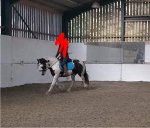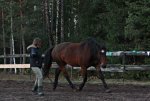Zoemary
Member
Everyone seems to have different ideas and understanding as to whether or not a horse is correctly working on the bit or whether they are behind the vertical / over bent etc. What’s your opinion?
Also my mare over the past two weeks has started to accept the contact and slowly start to round up, we still have a long way to go but I’d like opinions, tips, ideas.. anything on how’s shes looking/how to improve. (Pictures) Thanks!
Also my mare over the past two weeks has started to accept the contact and slowly start to round up, we still have a long way to go but I’d like opinions, tips, ideas.. anything on how’s shes looking/how to improve. (Pictures) Thanks!







